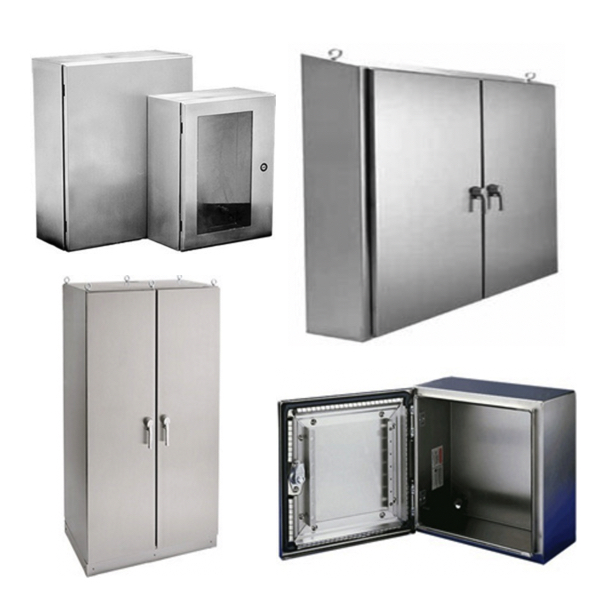nVent Hoffman Stainless Steel Enclosures

nVent Hoffman stainless steel enclosures from RSP Supply deliver superior corrosion resistance, strength, and hygiene for harsh industrial and outdoor environments. Available in Type 304 and Type 316 stainless steel, these enclosures meet NEMA Type 4X and 12 ratings for protection against water, dust, and corrosion. nVent Hoffman’s stainless steel enclosure portfolio includes wall-mount, freestanding, INLINE, CONCEPT, Zonex, and Watershed models. Watershed enclosures (Type 304 SS) are designed for sanitary food and beverage applications, featuring sloped tops and rounded edges for efficient water runoff during washdowns.
These durable enclosures are trusted in food processing, marine, oil and gas, and wastewater treatment facilities worldwide.
FAQs
Q: What is the difference between 304 and 316 stainless steel enclosures?
Type 304 stainless steel offers excellent corrosion resistance for general use, while Type 316 includes molybdenum for added protection in saline and chemical environments.
Q: Are nVent Hoffman stainless steel enclosures NEMA rated?
Yes. Most models are NEMA Type 4X and 12 rated, protecting electrical equipment from dust, water, corrosion, and ice formation.
Q: Which industries use stainless steel enclosures?
They’re commonly used in marine, food processing, oil and gas, and wastewater treatment industries where hygiene and durability are essential.
Q: What makes Watershed enclosures ideal for food and beverage facilities?
Watershed enclosures feature sloped tops and edges to prevent water accumulation and allow thorough washdown, ensuring compliance with sanitary design standards.
5: Are there explosion-proof stainless steel options from nVent Hoffman?
Yes. The Zonex stainless steel line is certified for Zone 1 and Zone 2 hazardous locations, providing increased safety for critical electrical systems.
Why Buy from RSP Supply
At RSP Supply, we carry the full range of nVent Hoffman stainless steel enclosures - from INLINE and CONCEPT models to Zonex and Watershed designs - ensuring you find the perfect fit for your application. Our experts can help identify the right NEMA-rated solution for your environment, whether it’s industrial, marine, or food-grade.
We offer fast shipping, competitive pricing, and exceptional product knowledge, making RSP Supply the trusted source for nVent Hoffman stainless steel enclosures that deliver long-lasting performance in the harshest conditions.

